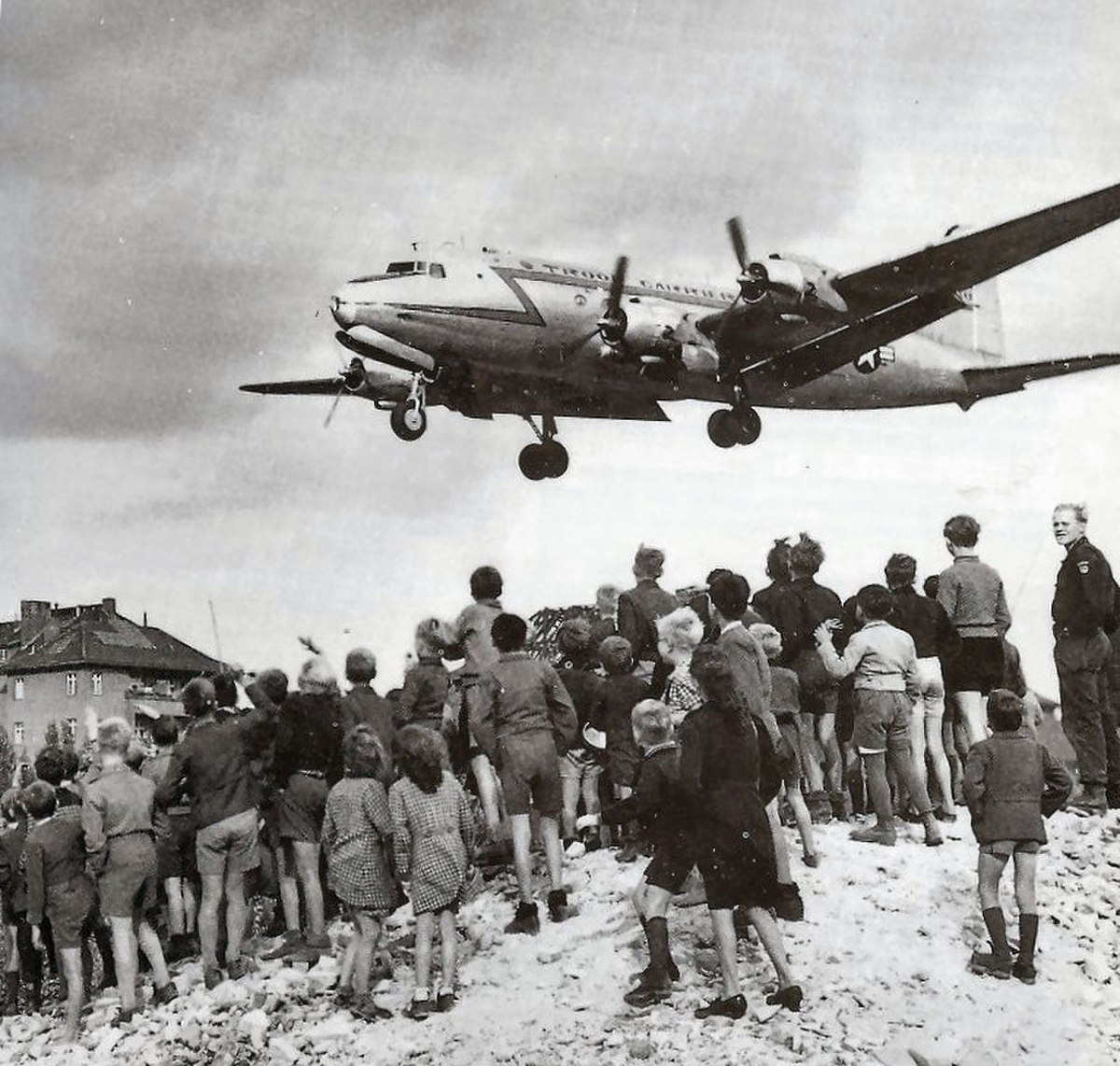
Berlin Blockade
Berlin, GermanyThe Berlin Blockade (24 June 1948 – 12 May 1949) was one of the first major international crises of the Cold War. During the multinational occupation of post–World War II Germany, the Soviet Union blocked the Western Allies' railway, road, and canal access to the sectors of Berlin under Western control. The Soviets offered to drop the blockade if the Western Allies withdrew the newly introduced Deutsche Mark from West Berlin.
The Western Allies organised the Berlin Airlift from 26 June 1948 to 30 September 1949 to carry supplies to the people of West Berlin, a difficult feat given the size of the city and the population. American and British air forces flew over Berlin more than 250,000 times, dropping necessities such as fuel and food, with the original plan being to lift 3,475 tons of supplies daily. By the spring of 1949, that number was often met twofold, with the peak daily delivery totalling 12,941 tons. Among these, candy-dropping aircraft dubbed "raisin bombers" generated much goodwill among German children.
Having initially concluded there was no way the airlift could work, the Soviets found its continued success an increasing embarrassment. On 12 May 1949, the USSR lifted the blockade of West Berlin, due to economic issues in East Berlin, although for a time the Americans and British continued to supply the city by air as they were worried that the Soviets would resume the blockade and were only trying to disrupt western supply lines. The Berlin Airlift officially ended on 30 September 1949 after fifteen months. The US Air Force had delivered 1,783,573 tons (76.4% of total) and the RAF 541,937 tons (23.3% of total), 1] totalling 2,334,374 tons, nearly two-thirds of which was coal, on 278,228 flights to Berlin. In addition Canadian, Australian, New Zealand and South African air crews assisted the RAF during the blockade.: 338 The French also supported but only to provide for their military garrison.
American C-47 and C-54 transport airplanes, together, flew over 92,000,000 miles (148,000,000 km) in the process, almost the distance from Earth to the Sun. British transports, including Handley Page Haltons and Short Sunderlands, flew as well. At the height of the Airlift, one plane reached West Berlin every thirty seconds.
The Berlin Blockade served to highlight the competing ideological and economic visions for postwar Europe. It played a major role in aligning West Berlin with the United States as the major protecting power,] and in drawing West Germany into the NATO orbit several years later in 1955.
